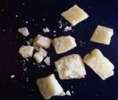
Brain's Mechanism Behind Cocaine Craving Identified
A study published May 25 in the journal Nature identifies a mechanism in the brain that helps to explain why craving for cocaine and the risk of relapse seem to increase after drug use stops. The research "reveals a novel mechanism for why cocaine craving intensifies over time and suggests a new target for the development of medications to decrease the risk of relapse in abstinent cocaine abusers," said Dr. Nora Volkow, director of the National Institute on Drug Abuse, one of the National Institutes of Health and supporter of the research.
Exposure to environmental cues such as people and places previously associated with drug use can trigger drug craving and lead to relapse, and earlier research in rats proved sensitivity to these cues progressively rises during a 60-day withdrawal period. This new study, also in rats, found an atypical increase in the number of proteins called AMPA glutamate receptors in a brain region called the nucleus accumbens (an area involved in motivation and reward). The receptors lack a particular subunit, resulting in greater responsiveness of nucleus accumbens neurons to input from other brain regions; they appear to be responsible for the incubation of cocaine craving.
"When these atypical receptors are blocked, cue-induced cocaine seeking during the withdrawal period is reduced. This finding suggests that this increased reactivity of the nucleus accumbens explains the intensified cue-induced cocaine seeking that occurs after prolonged withdrawal," said lead investigator Marina E. Wolf, Ph.D., professor and chair of neuroscience at the Rosalind Franklin University of Medicine and Science in Chicago.
Volkow said this finding suggests medications can be developed to block the atypical AMPA receptors, thus reducing drug craving, without interfering with neurotransmission at typical AMPA receptors needed for normal brain functions such as learning and memory. The research was performed in the laboratories of Wolf, Michela Marinelli, Ph.D., and Kuei Y. Tseng, M.D., Ph.D., at Rosalind Franklin University of Medicine and Science, and Yavin Shaham, Ph.D., of the NIDA Intramural Research Program in Baltimore, Md.